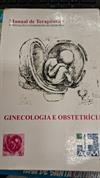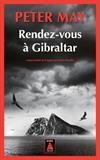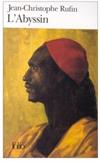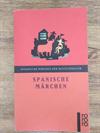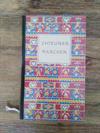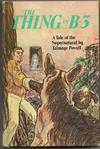Descent into Hell
by Charles Williams | Literature & Fiction | This book has not been rated.
ISBN: 1504006631 Global Overview for this book
ISBN: 1504006631 Global Overview for this book
Registered by  Cordelia-anne
Cordelia-anne of Decatur, Georgia USA on 11/16/2018
of Decatur, Georgia USA on 11/16/2018
 This Book is Currently in the Wild!
This Book is Currently in the Wild!
 Cordelia-anne
Cordelia-anne of Decatur, Georgia USA on 11/16/2018
of Decatur, Georgia USA on 11/16/2018 This Book is Currently in the Wild!
This Book is Currently in the Wild!
1 journaler for this copy...
I find I have two copies of this book by author Charles Williams, sometimes described as the "third Inkling" for his relationship to contemporary Christian authors C.S. Lewis and J. R. R. Tolkein, so I am reserving this one for BookCrossing release. I have not read this book.
From the Back Cover:
Charles Williams, who died in the summer of 1945 at the age of 59, was a man of unusual genius in several kinds of writing. His work included poetry, drama, literary criticism, and several important volumes in the field of theology. In addition, he wrote a series of seven remarkable novels. There is nothing in fiction quite like those novels. They may be described as supernatural thrillers, "popular" novels in the best sense by a man who had something important and quite individual to say. Their plots are adventurous and breathless, their scenes sometimes entrancing and sometimes horrifying. There are pages which describe with a frightful clarity, the deterioration and damnation of a human soul, and pages which describe the triumphant struggle towards salvation. Williams believed intensely in the impingement of the supernatural world and he excelled in descriptions of experiences such as many people have had only once or twice in their lives.
Edited from Wikipedia:
Also see, the Wikipedia entry for the Christian concept, the Harrowing of Hell.
Decent Into Hell was first published by Faber and Faber in 1937
Williams wrote a series of novels which combine elements of fantasy fiction and Christian symbolism. Most of this novel's action is spiritual or psychological in nature. It fits the "theological thriller" description sometimes given to his works. For this reason Descent was initially rejected by publishers, though T. S. Eliot's publishing house Faber and Faber would eventually pick up the novel because Eliot admired Williams's work. Though Eliot did not like Descent Into Hell as well as the earlier novels, he desired to see it printed.
Literary Allusions:
There are several prominent literary allusions running throughout Descent Into Hell. The character Peter Stanhope, frequently quotes and references William Shakespeare's play The Tempest.
Percy Bysshe Shelley's work Prometheus Unbound is also referenced repeatedly, regarding the appearance of a doppelgänger.
Less obvious Biblical allusions are present, as well as several references to mythology and legend, including Lilith, Samael, and succubi.
Williams and his work (Edited from Wikipedia):
He is writing that sort of book in which we begin by saying, let us suppose that this everyday world were at some one point invaded by the marvelous.
— C.S. Lewis on Charles Williams's novels
List of Williams' Works:
War in Heaven. 1930. – The Holy Grail surfaces in an obscure country parish and becomes variously a sacramental object to protect or a vessel of power to exploit.
Many Dimensions. 1931. – An evil antiquarian illegally purchases the fabled Stone of Suleiman (Williams uses this Muslim form rather than the more familiar King Solomon) from its Islamic guardian in Baghdad and returns to England to discover not only that the Stone can multiply itself infinitely without diminishing the original, but that it also allows its possessor to transcend the barriers of space and time.
"Et in Sempiternum Pereant," first published in The London Mercury, December 1935– Lord Arglay (protagonist in Many Dimensions) risks his life in a vain effort to rescue a ghost on the path to damnation.
Descent into Hell. 1937. – Generally thought to be Williams's best novel, Descent deals with various forms of selfishness, and how the cycle of sin brings about the necessity for redemptive acts. In it, an academic becomes so far removed from the world that he fetishises a woman to the extent that his perversion takes the form of a succubus. Other characters include a doppelgänger, the ghost of a suicidal Victorian labourer, and a playwright modelled in some ways on the author. Illustrates Williams's belief in the replacement of sin and substitutional love.
All Hallows' Eve. 1945. – Opens with a discussion between the ghosts of two dead women wandering about London. Presents a theology of the arts in which an artwork can provide truth that the artist was not consciously aware of. Ultimately, the book explores the meaning of human suffering and empathy by dissolving the barrier between the living and the dead through both black magic and divine love.
1930: War in Heaven
1930: Many Dimensions
1931: The Place of the Lion
1932: The Greater Trumps
1933: Shadows of Ecstasy
1937: Descent into Hell
1945: All Hallows' Eve
1970–72: The Noises That Weren’t There. Unfinished. First three chapters published in Mythlore 6 (Autumn 1970), 7 (Winter 1971) and 8 (Winter 1972).
Plays[edit]
c. 1912: The Chapel of the Thorn[24] (edited by Sørina Higgins; Berkeley: Apocryphile Press, 2014)
1930: A Myth of Shakespeare (London: Oxford University Press)
1930: A Myth of Francis Bacon (Published in the Charles Williams Society Newsletter, 11, 12, and 14)
1929–31: Three Plays (London: Oxford University Press)
The Rite of the Passion (1929)
The Chaste Wanton (1930)
The Witch (1931)
1963: Collected Plays by Charles Williams (edited by John Heath-Stubbs; London: Oxford University Press)
Thomas Cranmer of Canterbury (1936). Canterbury Festival play, following T. S. Eliot's Murder in the Cathedral in the preceding (inaugural) year.
Seed of Adam (1937)
Judgement at Chelmsford (1939)
The Death of Good Fortune (1939)
The House by the Stable (1939)
Terror of Light (1940)
Grab and Grace (1941)
The Three Temptations (1942)
House of the Octopus (1945)
2000: The Masques of Amen House (edited by David Bratman. Mythopoeic Press).
The Masque of the Manuscript (1927)
The Masque of Perusal (1929)
The Masque of the Termination of Copyright (1930)
Poetry:
1912: The Silver Stair (London: Herbert and Daniel)
1917: Poems of Conformity (London: Oxford University Press)
1920: Divorce (London: Oxford University Press)
1924: Windows of Night (London: Oxford University Press)
1930: Heroes and Kings (London: Sylvan Press)
1954: Taliessin through Logres (1938) and The Region of the Summer Stars (1944) (London: Oxford University Press)
1991: Charles Williams, ed. David Llewellyn Dodds (Woodbridge and Cambridge, UK: Boydell & Brewer: Arthurian Poets series). Part II, Uncollected and unpublished poems (pp. 149–281).
Theology[edit]
1938: He Came Down from Heaven (London: Heinemann).
1939: The Descent of the Dove: A Short History of the Holy Spirit in the Church (London: Longmans, Green)
1941: Witchcraft (London: Faber & Faber)
1942: The Forgiveness of Sins (London: G. Bles)
1958: The Image of the City and Other Essays (edited by Anne Ridler; London: Oxford University Press). Parts II through V
1990: Outlines of Romantic Theology (Grand Rapids, Mich.: Eerdmans)
Literary criticism:
1930: Poetry at Present (Oxford: Clarendon Press).
1932: The English Poetic Mind (Oxford: Clarendon Press).
1933: Reason and Beauty in the Poetic Mind (Oxford: Clarendon Press)
1943: The Figure of Beatrice (London: Faber & Faber)
1948: The Figure of Arthur (unfinished), in Arthurian Torso, ed. C. S. Lewis (London: Oxford University Press)
1958: The Image of the City and Other Essays (edited by Anne Ridler; London: Oxford University Press). Parts I and VI
1974: Religion and Love in Dante: The Theology of Romantic Love (Pennsylvania: Folcroft Library Editions).
2003: The Detective Fiction Reviews of Charles Williams (edited by Jared C. Lobdell; McFarland)
2017: The Celian Moment and Other Essays (edited by Stephen Barber; Oxford: The Greystones Press)
Biography:
1933: Bacon (London: Arthur Barker)
1933: A Short Life of Shakespeare (Oxford: Clarendon Press). Abridgment of the 2-volume work by Sir Edmund Chambers
1934: James I (London: Arthur Barker)
1935: Rochester (London: Arthur Barker)
1936: Queen Elizabeth (London: Duckworth)
1937: Henry VII (London: Arthur Barker)
1937: Stories of Great Names (London: Oxford University Press). Alexander, Julius Caesar, Charlemagne, Joan of Arc, Shakespeare, Voltaire, John Wesley
1946: Flecker of Dean Close (London: Canterbury Press)
Other works:
1931: Introduction, Poems of Gerard Manley Hopkins (Ed. Robert Bridges; 2nd ed.; London: Oxford University Press; OCLC 162569501)
1936: The Story of the Aeneid (London: Oxford University Press; OCLC 221046736)
1940: Introduction, Søren Kierkegaard's The Present Age (trans. Dru and Lowrie; Oxford University Press; OCLC 2193267)
1943: Introduction, The Letters of Evelyn Underhill (Longmans, Green and Co.)
1986: "Et in Sempiternum Pereant" (a short story) in The Oxford Book of English Ghost Stories (London: Oxford University Press)
1989: Letters to Lalage: The Letters of Charles Williams to Lois Lang-Sims (Kent State University Press)
2002: To Michal from Serge: Letters from Charles Williams to His Wife, Florence, 1939–1945 (edited by Roma King Jr.; Kent State University Press)
From the Back Cover:
Charles Williams, who died in the summer of 1945 at the age of 59, was a man of unusual genius in several kinds of writing. His work included poetry, drama, literary criticism, and several important volumes in the field of theology. In addition, he wrote a series of seven remarkable novels. There is nothing in fiction quite like those novels. They may be described as supernatural thrillers, "popular" novels in the best sense by a man who had something important and quite individual to say. Their plots are adventurous and breathless, their scenes sometimes entrancing and sometimes horrifying. There are pages which describe with a frightful clarity, the deterioration and damnation of a human soul, and pages which describe the triumphant struggle towards salvation. Williams believed intensely in the impingement of the supernatural world and he excelled in descriptions of experiences such as many people have had only once or twice in their lives.
Edited from Wikipedia:
Also see, the Wikipedia entry for the Christian concept, the Harrowing of Hell.
Decent Into Hell was first published by Faber and Faber in 1937
Williams wrote a series of novels which combine elements of fantasy fiction and Christian symbolism. Most of this novel's action is spiritual or psychological in nature. It fits the "theological thriller" description sometimes given to his works. For this reason Descent was initially rejected by publishers, though T. S. Eliot's publishing house Faber and Faber would eventually pick up the novel because Eliot admired Williams's work. Though Eliot did not like Descent Into Hell as well as the earlier novels, he desired to see it printed.
Literary Allusions:
There are several prominent literary allusions running throughout Descent Into Hell. The character Peter Stanhope, frequently quotes and references William Shakespeare's play The Tempest.
Percy Bysshe Shelley's work Prometheus Unbound is also referenced repeatedly, regarding the appearance of a doppelgänger.
Less obvious Biblical allusions are present, as well as several references to mythology and legend, including Lilith, Samael, and succubi.
Williams and his work (Edited from Wikipedia):
He is writing that sort of book in which we begin by saying, let us suppose that this everyday world were at some one point invaded by the marvelous.
— C.S. Lewis on Charles Williams's novels
List of Williams' Works:
War in Heaven. 1930. – The Holy Grail surfaces in an obscure country parish and becomes variously a sacramental object to protect or a vessel of power to exploit.
Many Dimensions. 1931. – An evil antiquarian illegally purchases the fabled Stone of Suleiman (Williams uses this Muslim form rather than the more familiar King Solomon) from its Islamic guardian in Baghdad and returns to England to discover not only that the Stone can multiply itself infinitely without diminishing the original, but that it also allows its possessor to transcend the barriers of space and time.
"Et in Sempiternum Pereant," first published in The London Mercury, December 1935– Lord Arglay (protagonist in Many Dimensions) risks his life in a vain effort to rescue a ghost on the path to damnation.
Descent into Hell. 1937. – Generally thought to be Williams's best novel, Descent deals with various forms of selfishness, and how the cycle of sin brings about the necessity for redemptive acts. In it, an academic becomes so far removed from the world that he fetishises a woman to the extent that his perversion takes the form of a succubus. Other characters include a doppelgänger, the ghost of a suicidal Victorian labourer, and a playwright modelled in some ways on the author. Illustrates Williams's belief in the replacement of sin and substitutional love.
All Hallows' Eve. 1945. – Opens with a discussion between the ghosts of two dead women wandering about London. Presents a theology of the arts in which an artwork can provide truth that the artist was not consciously aware of. Ultimately, the book explores the meaning of human suffering and empathy by dissolving the barrier between the living and the dead through both black magic and divine love.
1930: War in Heaven
1930: Many Dimensions
1931: The Place of the Lion
1932: The Greater Trumps
1933: Shadows of Ecstasy
1937: Descent into Hell
1945: All Hallows' Eve
1970–72: The Noises That Weren’t There. Unfinished. First three chapters published in Mythlore 6 (Autumn 1970), 7 (Winter 1971) and 8 (Winter 1972).
Plays[edit]
c. 1912: The Chapel of the Thorn[24] (edited by Sørina Higgins; Berkeley: Apocryphile Press, 2014)
1930: A Myth of Shakespeare (London: Oxford University Press)
1930: A Myth of Francis Bacon (Published in the Charles Williams Society Newsletter, 11, 12, and 14)
1929–31: Three Plays (London: Oxford University Press)
The Rite of the Passion (1929)
The Chaste Wanton (1930)
The Witch (1931)
1963: Collected Plays by Charles Williams (edited by John Heath-Stubbs; London: Oxford University Press)
Thomas Cranmer of Canterbury (1936). Canterbury Festival play, following T. S. Eliot's Murder in the Cathedral in the preceding (inaugural) year.
Seed of Adam (1937)
Judgement at Chelmsford (1939)
The Death of Good Fortune (1939)
The House by the Stable (1939)
Terror of Light (1940)
Grab and Grace (1941)
The Three Temptations (1942)
House of the Octopus (1945)
2000: The Masques of Amen House (edited by David Bratman. Mythopoeic Press).
The Masque of the Manuscript (1927)
The Masque of Perusal (1929)
The Masque of the Termination of Copyright (1930)
Poetry:
1912: The Silver Stair (London: Herbert and Daniel)
1917: Poems of Conformity (London: Oxford University Press)
1920: Divorce (London: Oxford University Press)
1924: Windows of Night (London: Oxford University Press)
1930: Heroes and Kings (London: Sylvan Press)
1954: Taliessin through Logres (1938) and The Region of the Summer Stars (1944) (London: Oxford University Press)
1991: Charles Williams, ed. David Llewellyn Dodds (Woodbridge and Cambridge, UK: Boydell & Brewer: Arthurian Poets series). Part II, Uncollected and unpublished poems (pp. 149–281).
Theology[edit]
1938: He Came Down from Heaven (London: Heinemann).
1939: The Descent of the Dove: A Short History of the Holy Spirit in the Church (London: Longmans, Green)
1941: Witchcraft (London: Faber & Faber)
1942: The Forgiveness of Sins (London: G. Bles)
1958: The Image of the City and Other Essays (edited by Anne Ridler; London: Oxford University Press). Parts II through V
1990: Outlines of Romantic Theology (Grand Rapids, Mich.: Eerdmans)
Literary criticism:
1930: Poetry at Present (Oxford: Clarendon Press).
1932: The English Poetic Mind (Oxford: Clarendon Press).
1933: Reason and Beauty in the Poetic Mind (Oxford: Clarendon Press)
1943: The Figure of Beatrice (London: Faber & Faber)
1948: The Figure of Arthur (unfinished), in Arthurian Torso, ed. C. S. Lewis (London: Oxford University Press)
1958: The Image of the City and Other Essays (edited by Anne Ridler; London: Oxford University Press). Parts I and VI
1974: Religion and Love in Dante: The Theology of Romantic Love (Pennsylvania: Folcroft Library Editions).
2003: The Detective Fiction Reviews of Charles Williams (edited by Jared C. Lobdell; McFarland)
2017: The Celian Moment and Other Essays (edited by Stephen Barber; Oxford: The Greystones Press)
Biography:
1933: Bacon (London: Arthur Barker)
1933: A Short Life of Shakespeare (Oxford: Clarendon Press). Abridgment of the 2-volume work by Sir Edmund Chambers
1934: James I (London: Arthur Barker)
1935: Rochester (London: Arthur Barker)
1936: Queen Elizabeth (London: Duckworth)
1937: Henry VII (London: Arthur Barker)
1937: Stories of Great Names (London: Oxford University Press). Alexander, Julius Caesar, Charlemagne, Joan of Arc, Shakespeare, Voltaire, John Wesley
1946: Flecker of Dean Close (London: Canterbury Press)
Other works:
1931: Introduction, Poems of Gerard Manley Hopkins (Ed. Robert Bridges; 2nd ed.; London: Oxford University Press; OCLC 162569501)
1936: The Story of the Aeneid (London: Oxford University Press; OCLC 221046736)
1940: Introduction, Søren Kierkegaard's The Present Age (trans. Dru and Lowrie; Oxford University Press; OCLC 2193267)
1943: Introduction, The Letters of Evelyn Underhill (Longmans, Green and Co.)
1986: "Et in Sempiternum Pereant" (a short story) in The Oxford Book of English Ghost Stories (London: Oxford University Press)
1989: Letters to Lalage: The Letters of Charles Williams to Lois Lang-Sims (Kent State University Press)
2002: To Michal from Serge: Letters from Charles Williams to His Wife, Florence, 1939–1945 (edited by Roma King Jr.; Kent State University Press)
Journal Entry 2 by  Cordelia-anne
Cordelia-anne at Little Free Library - Jittery Joe's Baxter Street in Athens, Georgia USA on Saturday, November 17, 2018
at Little Free Library - Jittery Joe's Baxter Street in Athens, Georgia USA on Saturday, November 17, 2018
 Cordelia-anne
Cordelia-anne at Little Free Library - Jittery Joe's Baxter Street in Athens, Georgia USA on Saturday, November 17, 2018
at Little Free Library - Jittery Joe's Baxter Street in Athens, Georgia USA on Saturday, November 17, 2018
Released 5 yrs ago (11/16/2018 UTC) at Little Free Library - Jittery Joe's Baxter Street in Athens, Georgia USA
WILD RELEASE NOTES:
Hello! You've received this book from bookcrossing, a random community of book lovers. If you'd like to join the bookcrossing story of this book, please make a journal entry at our site with the BCID (bookcrossing ID) on the bookplate. Bookcrossing is free to join and confidential. Tell us anything you'd like to share about this book.



